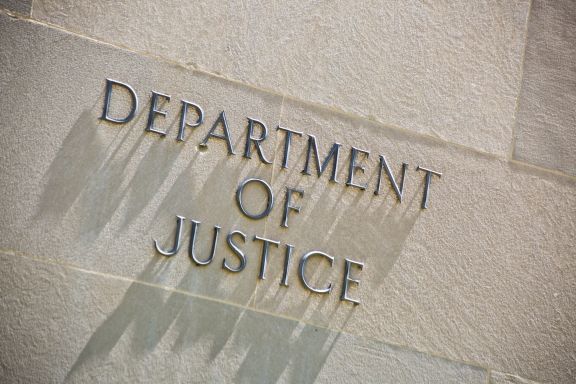Corporate Criminal Prosecution and Root Cause Analysis

Guidance from the Department of Justice
Have you ever read the Department of Justice Principles of Federal Prosecution of Business Organizations? Most people haven’t. Nor have they read the document “U.S. Department of Justice Criminal Division Evaluation of Corporate Compliance Programs.” However, if you are interested in preventing corporate criminal prosecution, you should read both documents and then get familiar with advanced root cause analysis.
Making the Decision to Charge a Corporation

The Department of Justice publishes the factors prosecutors should consider when deciding to charge a corporation with a crime (or recommending that a Grand Jury issue charges). They are:
- The nature and seriousness of the offense, including the risk of harm to the public, and applicable policies and priorities, if any, governing the prosecution of corporations for particular categories of crime (seeJM 9-28.400);
- The pervasiveness of wrongdoing within the corporation, including the complicity in, or the condoning of, the wrongdoing by individuals in corporate management (seeJM 9-28.500);
- The corporation’s history of similar misconduct, including prior criminal, civil, and regulatory enforcement actions against it, both domestically and internationally (seeJM 9-28.600);
- The corporation’s willingness to cooperate, including as to potential wrongdoing by its current and former employees, directors, officers, and agents, as well as other individuals and entities that engaged in the misconduct under investigation (seeJM 9-28.700);
- The adequacy and effectiveness of the corporation’s compliance program at the time of the offense, as well as at the time of a charging decision (seeJM 9-28.800);
- The corporation’s timely and voluntary self-disclosure of wrongdoing (seeJM 9-28.900);
- The corporation’s remedial actions, including, but not limited to, any efforts to implement an adequate and effective corporate compliance program or to improve an existing one, to replace responsible management, to discipline or terminate wrongdoers, to execute financial compensation measures that punish wrongdoing, or to pay restitution (seeJM 9-28.1000);
- Collateral consequences, including whether there is disproportionate harm to shareholders, pension holders, employees, and others not proven personally culpable, as well as impact on the public arising from the prosecution (seeJM 9-28.1100);
- The adequacy of remedies such as civil or regulatory enforcement actions, domestically or internationally, including remedies resulting from the corporation’s cooperation with relevant government agencies (seeJM 9-28.1200);
- The adequacy of the prosecution of individuals responsible for the corporation’s misconduct (seeJM 9-28.1300); and
- The interests of any victims (seeJM 9-28.1400), including what steps the corporation has taken to identify potential victims or other persons or entities who were significantly, even if indirectly, harmed by the criminal conduct, and what steps the corporation has taken to mitigate such harm.
So how can advanced root cause analysis impact corporate criminal prosecutions? Read on…
Most Significant Factor for Corporate Criminal Prosecution
Advanced root cause analysis can keep your corporation out of criminal court by learning from smaller incidents (precursors) to prevent major accidents. In other words, corporations can prevent major accidents and, therefore, won’t be prosecuted for accidents that never take place.
We have written many articles providing practical ways to learn to prevent major accidents, including:
- Preventing Major Accidents
- SIFs, PSIFs, & Preventing SIFs
- Why Do We Still Have Major Process Safety Accidents?
We have helped companies turn the corner and prevent major accidents. See the success stories at THIS LINK. Therefore, preventing:
- Fatalities,
- Major Process Safety Incidents (fires, explosions, or spills)
- Environmental Releases
Is the best way to prevent corporate criminal prosecution. And using advanced root cause analysis is the best way to do that.
Factor #3: Corporate History
But what happens if, despite your best efforts, you have a major accident? Then, the Department of Justice looks at the 11 factors listed above.
The third factor is the corporation’s history of “similar misconduct.” This includes prior criminal, civil, and regulatory enforcement actions against it, both domestically and internationally.
Therefore, reducing the number and seriousness of incidents provides your corporation with some forgiveness when it comes to criminal prosecution.
Once again, using advanced root cause analysis to reduce the number and seriousness of incidents helps prevent criminal prosecution.
Factor 5: Compliance Program
Compliance is about following the rules. And if a rule or law is broken, you need to perform a root cause analysis.
The DoJ says:
Root Cause Analysis
What is the company’s root cause analysis of the misconduct at issue?
Were any systemic issues identified?
Who in the company was involved in making the analysis?
We wrote an entire article about compliance. See it HERE.
But you get credit if you have performed excellent root cause analysis on any previous compliance problems and implemented effective corrective actions to establish a culture of compliance.
Learn About Advanced Root Cause Analysis
Where can you learn about effective, advanced root cause analysis? At one of our upcoming TapRooT® Root Cause Analysis Courses. See the dates and locations of our public TapRooT® Root Cause Analysis Courses.
I would recommend the 5-Day TapRooT® Advanced Root Cause Analysis Team Leader Course for anyone seriously interested in compliance. It addresses investigating and correcting management system root causes and Generic Causes.
To schedule a course at your site, contact us by CLICKING HERE or by calling 865-539-2139.




